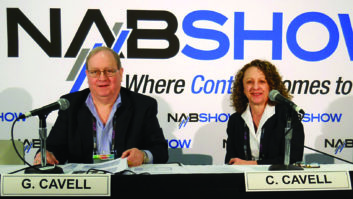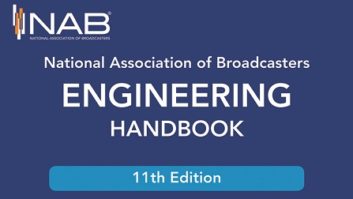More on IBOC Antennas
Oct 1, 2001 12:00 PM, By Richard Fry
The article titled “Transmission: Implementing IBOC” in the October 2001 issue of BE Radio is very informative, but one concept in it may need further development. That concept is the use of separate transmit antennas for combining analog and digital transmissions during the “hybrid” mode of FM IBOC, or so-called “space combining.” The following considerations in this approach are not immediately obvious, and may moderate its successful use.
Carrier Ratio
For reasons of compatibility, hybrid FM IBOC requires a specific carrier ratio between its digital and analog components. At first, it seems that all that would be needed for space combining would be to correctly specify the analog and digital transmitter output powers, accounting for transmission line losses and antenna gains for the separate radiation systems of the two components. However when separate antennas are involved, the azimuth and elevation radiation patterns of the antennas also are a factor in setting the ratio between the analog and digital components seen at the receiver. This situation adds constraints on the use of this method.
The affect of space combining FM IBOC components can be quite significant. It almost certainly eliminates any possibility of using one antenna site for the analog component and another one some distance away for the digital component, because it will be virtually impossible for radiated fields from separated sites to track each other at the required carrier ratio over an adequate amount of the service area.
Even the radiation patterns of separate antennas installed on the same tower typically will not match each other well at many azimuth and elevation angles, which will change the carrier ratios seen by receivers in the areas affected. For many azimuth and elevation angles, these pattern variations together easily can introduce variations of 20dB or more between the radiated relative field values from two co-located antennas.
Cross-Coupling
Using co-located, separate antennas also requires consideration of the cross-coupling between them. The transmitter most affected will be the FM IBOC transmitter, because analog ERP is many times higher than digital ERP. Depending on the radiation patterns, gains, and installation geometry of the two antennas, enough cross-coupled analog power may appear at the output connector of the IBOC transmitter to force it into a VSWR foldback mode. Due to lack of accurate near-field performance data for FM antennas and the need for specific siting information, the amount and performance impact of cross-coupling will be difficult to predict. Problems may be recognizable only after operations have begun, and their resolution could require additional time and cost.
Using a single antenna for hybrid FM IBOC will assure that the radiated A:D carrier ratio will be a constant in every direction, and that the compatibility assumptions of hybrid FM IBOC will not be compromised by the radiation pattern characteristics of the antenna system.
Richard Fry
Quincy, IL
[email protected]











